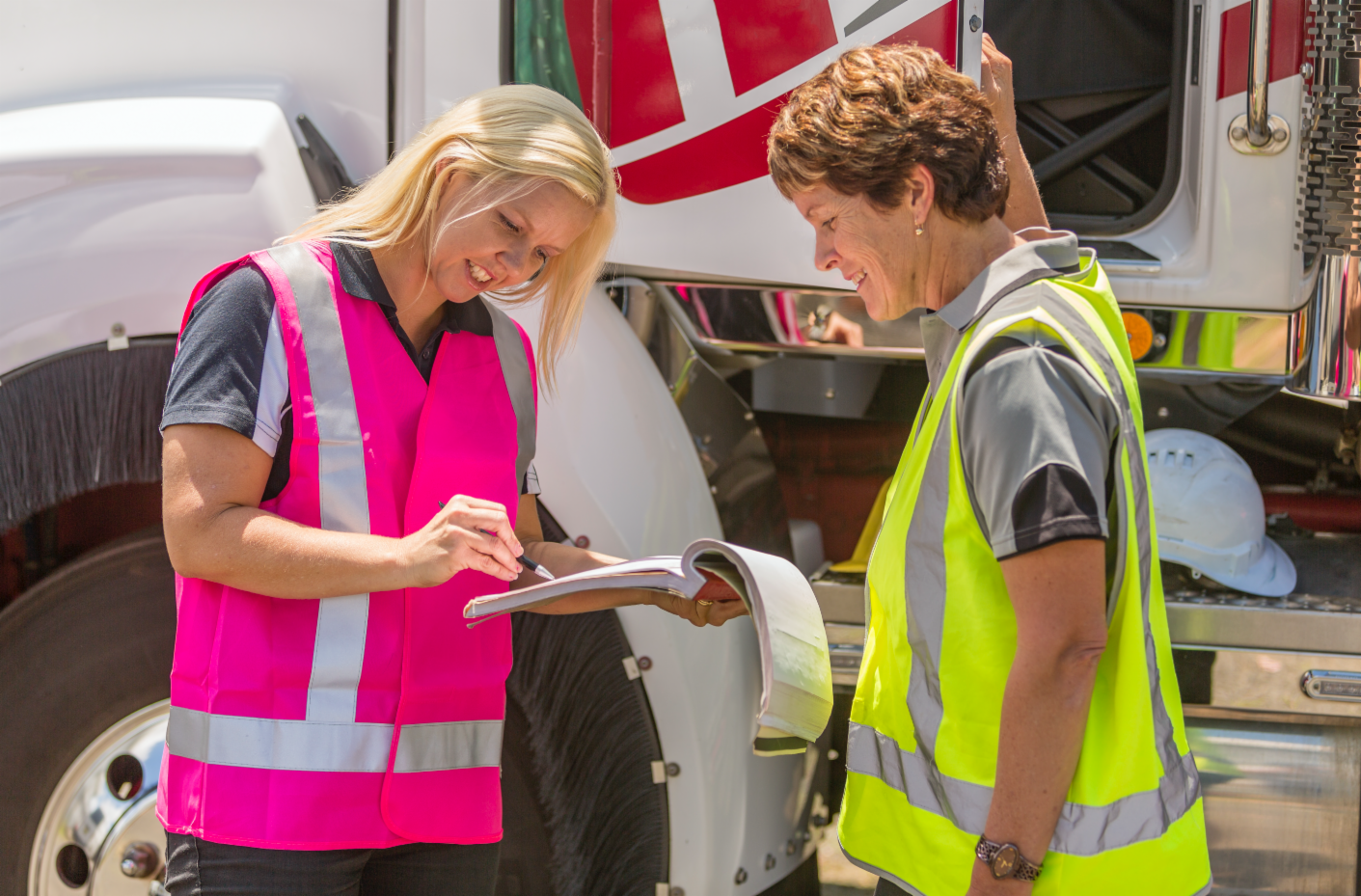Using Caution in School Zones
School zones are filled with hazards. Whether you are driving a commercial truck or company vehicle, drivers must be extra vigilant in and around a school zone. Read the information below and ask yourself if there are actions you can take to improve your driving skills and reduce the risk of a school-zone incident.
RECOGNIZE THE HAZARDS
 TRAFFIC CONGESTION
TRAFFIC CONGESTION
School buses and parents who drive their children to school may stop frequently and unexpectedly in and around designated drop-off zones.
PEDESTRIANS
Expect pedestrians at crosswalks and jaywalkers on the road. Distracted walkers using mobile devices create another hazard. Students riding bicycles, skateboards, etc. may appear suddenly.
INEXPERIENCED DRIVERS
Teen drivers who are new behind the wheel add another hazard to an already hectic traffic pattern. Inexperienced drivers may be unable to manage their vehicle and the hazards around them.
KNOW THE DEFENSE
 OBEY ALL TRAFFIC SIGNS
OBEY ALL TRAFFIC SIGNS
Be mindful of school zone signage, particularly where school zones start and end, drop-off zones, and periods of reduced speeds.
YIELD TO PEDESTRIANS
Stop at crosswalks and obey crossing guard instructions. Watch for jaywalkers, skateboarders, and bicyclists entering traffic lanes.
DRIVE DEFENSIVELY
Do not speed in a school zone. Consider slowing down by 5-10 MPH to ensure you have time to recognize hazards and react properly in time. Never tailgate in a school zone, especially behind a school bus. Be aware of your surroundings and mindful that inexperienced student drivers may be in the area.
AVOID DISTRACTIONS
Be attentive to your surroundings. Keep mobile devices out of sight and silenced while driving. Avoid other distracting activities while driving, like eating and drinking, listening to the radio, etc.
WATCH FOR STOPPING VEHICLES
Never pass a school bus with its red lights activated. Additionally, never speed up to pass a bus that is preparing to drop off or pick up. Watch for vehicles that stop suddenly to drop off passengers.
The information in this article is provided as a courtesy of Great West Casualty Company and is part of the Value-Driven® Company program. Value-Driven Company was created to help educate and inform insureds so they can make better decisions, build a culture that values safety, and manage risk more effectively. To see what additional resources Great West Casualty Company can provide for its insureds, please contact your safety representative, or click below to find an agent.
© Great West Casualty Company 2023. The material in this publication is the property of Great West Casualty Company unless otherwise noted and may not be reproduced without its written consent by any person other than a current insured of Great West Casualty Company for business purposes. Insured should attribute use as follows: “© Great West Casualty Company 2018. Used with permission by Great West Casualty Company.”
This material is intended to be a broad overview of the subject matter and is provided for informational purposes only. Great West Casualty Company does not provide legal advice to its insureds, nor does it advise insureds on employment-related issues. Therefore, the subject matter is not intended to serve as legal or employment advice for any issue(s) that may arise in the operations of its insureds. Legal advice should always be sought from the insured’s legal counsel. Great West Casualty Company shall have neither liability nor responsibility to any person or entity with respect to any loss, action, or inaction alleged to be caused directly or indirectly as a result of the information contained herein.




